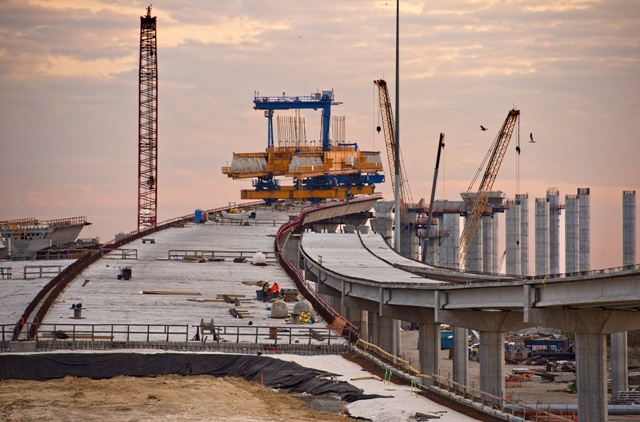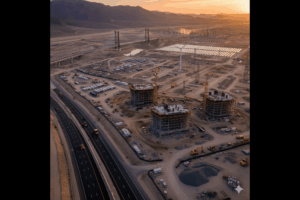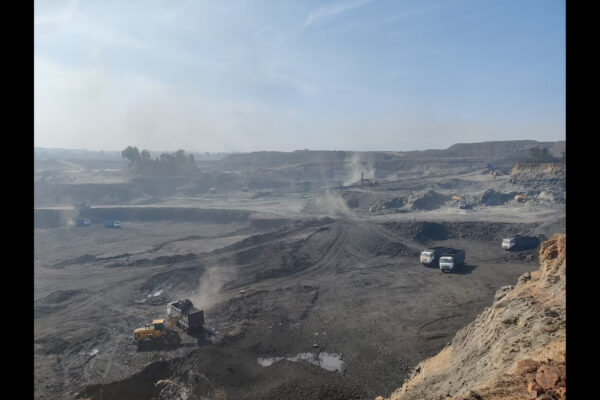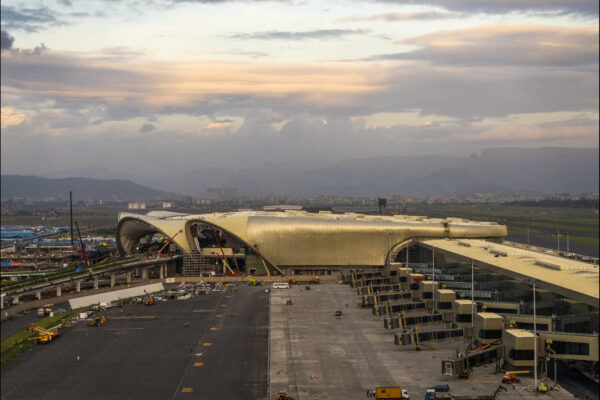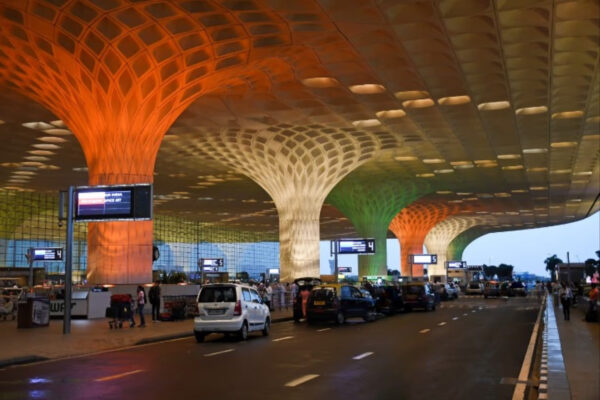Indian Infra Roadmap 2022
The infrastructure sector in the country is preparing itself to undergo a holistic development and attain better targets in 2022 as compared to the year that went by with more new projectshaving far-reaching effects. EPC World analyses the road ahead for the sector at large.
Riding the pandemic wave and scampering back on its feet, infrastructure sector will hold the key to push the economic growth of the country. With roads & highways forming a common thread across sectors, enabling their growth and development, adding on to the national highways in the country, an integrated multi-modal national network of transportation and logistics, connectivity with far-flung and rough terrains and increasing more funds are some of the key initiatives being planned in the roads & highways sector. Further, Finance Minister Nirmala Sitharaman has repeatedly indicated that the forthcoming budget in the year 2022 will have a continued focus on infrastructure.
Adding to the developmental focus, PM GatiShakti – National Master Plan is looking to achieve multimodal connectivity and reduce costs. As reported in one of our previous editions, PM GatiShakti is a digital platform connecting 16 ministries — including Roads and Highways, Railways, Shipping, Petroleum and Gas, Power, Telecom, Shipping, and Aviation — for ensuring holistic planning and execution of infrastructure projects. Projects covered under the initiative would include Bharatmala, Sagarmala, inland waterways, dry/land ports, UDAN, various economic zones and product specific clusters, defence corridors, electronic parks, industrial corridors, and agri zones.The portal will offer 200 layers of geospatial data, including on existing infrastructure such as roads, highways, railways, and toll plazas, as well as geographic information about forests, rivers and district boundaries to aid in planning and obtaining clearances & also look at the issue of moving beyond government departments working in silos.
Along with this, schemes like Pradhan Mantri Gram Sadak Yojna, Industrial & Dedicated Freight Corridors, Bharatmala and Sagarmala projects, Jal Marg Vikas, and UDAN are enabling economic growth. As industry experts add, the focus on privatisation of assets is another step in the right direction as the participation of private sector will bring efficiency in the system, agility in ensuring last-mile connectivity through multimodal and increase freight revenue. Faster execution of various infrastructure schemes will also improve connectivity and make Indian businesses more competitive.
According to the Ministry of Finance, the country is inching towards its ambitious target to scale-up infrastructure spending to Rs 111 lakh crore over FY20-25 from Rs 50 lakh crore over FY14-19. This would require an improved quality of project management and increase in funds to execute the growing pipeline of projects.
Towards the end of 2021, the Union Cabinet approved the construction of 32,152 km roads at a cost of Rs 33,822 crore and also gave its consent for the provisioning of mobile services in the uncovered villages.It is estimated that 200,000 km of national highways is expected to be completed by 2022.
Adding to the developmental focus of the government, Union Minister Anurag Thakur in a statement mentioned that as many as 7,287 villages of 44 aspirational districts across Andhra Pradesh, Chhattisgarh, Jharkhand, Maharashtra and Odisha will get mobile tower connectivity soon with 4G internet connections reaching these villages. Also in the pipeline are 21 greenfield airports across the country that have received in-principle approval, approximately 8,400 greenfield expressways are being built under the Bharatmala project and work is under progress for a 16,000 km-plus long natural gas pipeline. Industry data estimates reveal that the aircraft passenger traffic is likely to touch 520m by 2037. This would require tremendous efforts as to cater to this traffic the country will need a fleet size of about 1800 aircraft by 2037. The growth in demand will need necessary infrastructure and policy initiatives by the government.
It is noteworthy that the National Infrastructure Pipeline (NIP) was launched with projected infrastructure investment of around Rs. 111 lakh crore during FY 2020-2025 to provide world-class infrastructure across the country, and improve the quality of life for all citizens. NIP was launched with 6,835 projects, which has expanded to over 9,000 projects covering 34 sub- sectors. NIP is a first-of-its-kind, whole-of-government exercise and covers all infrastructure sub- sectors, including MSMEs working in infrastructure sector, as mentioned in Harmonized Master List of Infrastructure Sub-sectors notified by Department of Economic Affairs (DEA).
With the global pandemic still raging on and variants of concern finding their way to effect lives, healthcare infrastructure needs to be aggressively focused upon. The government has plans of having a medical college in every district and All India Institute of Medical Sciences (AIIMS) in every state, the budgetary allocation for healthcare will need a healthier revision. Further, a similar increase in budget and reforms will also be needed in the education sector that has been affected severely with the global pandemic.
Looking at the real estate sector, industry statistics indicate that the housing demand is on the rise and growing rapidly. If the latest report of CBRE, i. e. India Market Monitor is considered, sustained attractive mortgage terms and government incentives are driving the housing sales tremendously. The housing sales surged 46 percent QoQ to 50,000 housing units in the third quarter of 2021 (Q3 2021) and a solid 86 percent on a YoY basis. Therefore, despite challenges and upheaval due to the pandemic, the residential sector has shown great resilience and will continue to achieve heights in the coming financial year. “This trend of robust and recovering demand will ensure noticeable returns on investment as residential prices are bound to surge in the near future. For example, if someone invests Rs 1 core in the real estate sector of any of the top eight cities of India, an overall ROI of 25-30 percent can be expected comfortably,” says Dr. Atul Goel, MD, Goel Ganga Group & President (Elect.), NAREDCO Pune. He further adds that the flagship mission of the Indian Government, Pradhan Mantri Awas Yojana (PMAY) is culminating in the year 2022. “Therefore, this financial year will remain dedicated to the rollout of the affordable housing schemes and making the provision for low-cost homes. Real estate developers engaged providing affordable housing will get cheaper loans and other rebates. In addition to this, the lower middle class to economically weaker section (EWS) of the society will have more housing options as the government is encouraging new housing technologies, which have brought down the cost of housing units significantly,” states Dr. Goel.
On the energy front, India is known to be world's third-largest energy consumer. There are plans to invest $100bn in oil and gas infrastructure by 2024 and $100bn in oil field equipment and services in the next decade. The state-controlled upstream firm ONGC plans to raise its oil and gas exploration and production (E&P) acreage by nearly fourfold by 2025, as the country attempts to increase domestic crude production and minimise its dependence on imports."The company plans to steeply enhance the acreage under E&P from the current 127,000km to 500,000km by 2025," stated oil minister Hardeep Puri. He further added that ONGC will "also focus on green hydrogen and other sources of enhancing domestic petroleum and natural gas production in the country, which will contribute in reducing the fuel import bill.
In a recent initiative and catering to the energy needs in the country, Prime Minister Narendra Modi recently inaugurated a petroleum products pipeline built at a cost of Rs 1,524 crore by state-owned refiner Bharat Petroleum Corporation (BPCL) at a ceremony in Kanpur. BPCL operated 356 Kilometer Bina-Panki Multi Product Pipeline, has a design capacity of 3.5 MMTPA and is likely to cater to the demands of petroleum products from the northern states. It will also fortify the supply of petroleum products in Kanpur, Lucknow, Aonla, Shahjanpur, Baitalpur, Kathgodam in Uttrakhand and Muzzafarpur in Bihar.
In an added initiative, there are plans to create an energy transition roadmap for the oil and gas sector by the government. This initiative will be a key enabler to push the country on the path to attain net-zero emissions by 2070. The oil ministry has set up the Energy Transition Advisory Committee headed by former petroleum secretary Tarun Kapoor to draft the strategy.The panel will include representatives of all public-sector oil and gas companies and has until the middle of 2022 to recommend a roadmap for the sector's transition.The committee will focus on scaling up infrastructure for biofuels that is based on a sustainable biomass supply chain, a critical focus need to transition away from fossil fuels in the transport sector.
As reported in our previous editions, Aatma Nirbhar Bharat has also provided impetus to the domestic manufacturing ecosystem especially to Micro, Small and Medium Enterprises (MSMEs) with an aim to facilitate local manufacturing. Not only that, with a capital infusion of INR 1,000 crores to Solar Energy Corporation of India, it is likely to push a surge in large-scale solar installations, grid-connected projects, solar plants, and solar parks along with a phased manufacturing plan for solar cells, solar panels, and domestic production of solar inverters and solar lanterns.
Time and again it has been reiterated by the government that infrastructure development is one of its key focus areas and the spending on the sector is going to continue in some form or the other. Prime Minister Narendra Modi in his Independence Day speech in August 2021 had shared that the country has set a target of 450 gigawatts (GW) of renewable energy capacity by 2030, with the country's whole renewable energy portfolio at 146 GW. He lauded the efforts of the Power Ministry for achieving the 100 GW target well within schedule. India is the sole G20 nation whose actions are in concurrence with the Paris Climate agreement with regard to the global rise in temperature. The renewable sector in the country presently accounts for 22 percent of the total installed capacity of about 357GW.
Technology Trends
Technology is proving to be a great enabler in pushing the developmental activities across a cross-section of sectors. In one of our previous editions we have explored how technology is being used in the Roads & Highways sector to speed up project execution and delivery & also iron out the flaws. Similarly, the real estate sector is also finding technology tools reshaping the sector. Anilcy Verghese, AVP Sales & Marketing, Karle Infra Pvt. Ltd. shares how use of AI and cloud increased in year 2021 in the real estate sector. He further adds that year 2022 will see an increase in Focus on Customer Experience (CX). “Earlier, the focus was on customer service which is very reactive and focuses on assistance that a company provides to its customers when asked. Now, however, the shift has been towards customer experience which takes into account every single touch point in the entire interaction of the customer with the company which today includes both online and offline touch points. Moreover, Customer Experience Management (CEM) follows CRM, attracting and retaining customers by providing a great experience,” adds Verghese.
He further elaborates how secondary market revitalization owing to urbanization and increased standards of living and also the rise of community living are going to be the key in 2022. Further, conversational AI, ensuring a better CEM and Big Data and Machine Learning will play a key role in the coming year.

